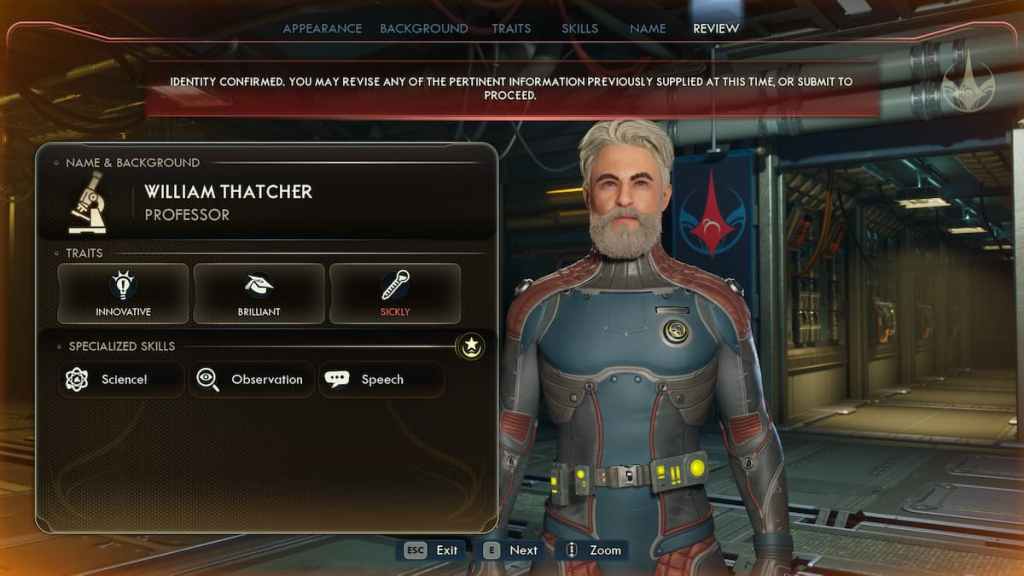Obsidian Entertainment is renowned for its RPGs, but it has failed to top its 2010 masterpiece, Fallout: New Vegas, despite putting out some pretty awesome games over the years.
However, with The Outer Worlds 2 and its massive emphasis on player choice, where every bit of your character impacts how the story unfolds, Obsidian might be nearing those golden years again, and I’m all here for it. The studio provided me with an early preview build focusing on the game’s prologue to really show off what The Outer Worlds 2 has to offer, and I’m impressed with what I’ve seen so far.
Not just a character

Roleplay mechanics have eroded from the genre literally called role-playing game over the past few years. What gaming has settled on as “RPG” is anything but, usually characterized merely by stats and a character creator, the latter rarely influencing the story significantly. There are even games carrying this moniker that have little to no role-playing at all, such as FromSoftware’s nonetheless stellar titles.
But The Outer Worlds 2 wears the RPG label proudly, allowing you to create not just a character who you have headcanon on, but a real person that exists within the game’s world and to whom others will react based on who they are.
Let me set the stage for you first.
You’re a Commander for the Earth Directorate, an organization connecting Earth to its many galactic colonies. You’ve been sent to Arcadia, a wealthy colony unaffiliated with Earth and its Directorate, and ruled by a powerful dictatorship known as the Protectorate.
This is more or less where the similarities between characters stop. Though some backstory is filled in by the creative minds at Obsidian, most of who your character is is determined by what you’ve selected during character creation, which further significantly reflects in how other characters treat you, what dialogues play for you, and what options you’ll get during gameplay and conversations.
The world reacts to your background, and the build of the game I played had six of them. These were Ex-Convict, Gambler, Lawbringer, Professor, Renegade, and Roustabout. Most are self-explanatory, with the last being quite unique in that your character has no idea what they’re doing or how they ended up where they are.
Dialogues will very often be fundamentally different depending on your background, as characters do take into account who you really are, rather than treating you as any other character with bonus dialogue choices for particular backgrounds (wink, Cyberpunk 2077, wink). It’s such an important part of character creation as it opens up your whole role-playing experience.
Gunslinging, shadow-stalking, choice-making

The preview build is set during the game’s prologue sequence, where you and other Earth Directorate agents connect with another Earth Directorate double agent who has been secretly working alongside Arcadians on a space station. She has means of obtaining a “skip drive” for the Earth Directorate, but requires your help to infiltrate the station.
I will avoid spoiling the story of this segment, as it does have several minor outcomes and changes depending on how you approach it.
But what I can tell you is that, from the very onset, the options are numerous. For example, during the initial part of the prologue, you can find an ID card, which you can use to call in security and pretend you’re an Arcadian soldier. By fooling the security guard, he will disable the hostile robots in the next section and allow you to smoothly pass through.
Later on, you’re forced to split up with your fellow Agents, choosing either to tackle Security or Central Dispatch. One is more leaned towards stealth gameplay and quiet approaches, the other more confrontational. This is a great moment to reflect on who your character is and what they’d decide.

Playing a Gambler who likes to use her wits and avoid open combat, I initially selected the stealthy approach, while my Gun-savvy Professor opted to fight it out. The journey and its outcomes are different based on what you picked here, allowing for a ton of replayability.
In both instances, the gameplay and combat were visceral and fun, reminiscent of New Vegas and The Outer Worlds 1. The guns kick when they should, you feel good when shooting, while stealth gameplay, though simple, is effective enough to allow for a sneaky stabby playthrough.
The preview and the prologue were very short, but nonetheless showed me that The Outer Worlds 2 is going to be a mighty fine RPG, and one that we’ve been waiting for Obsidian to put out for far too long.
Source link


